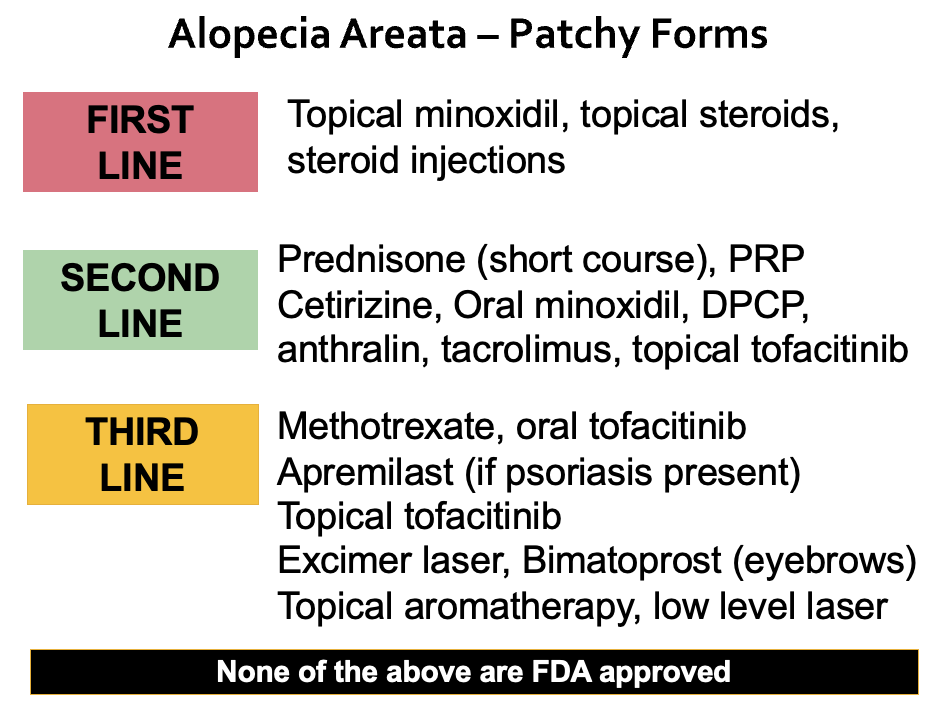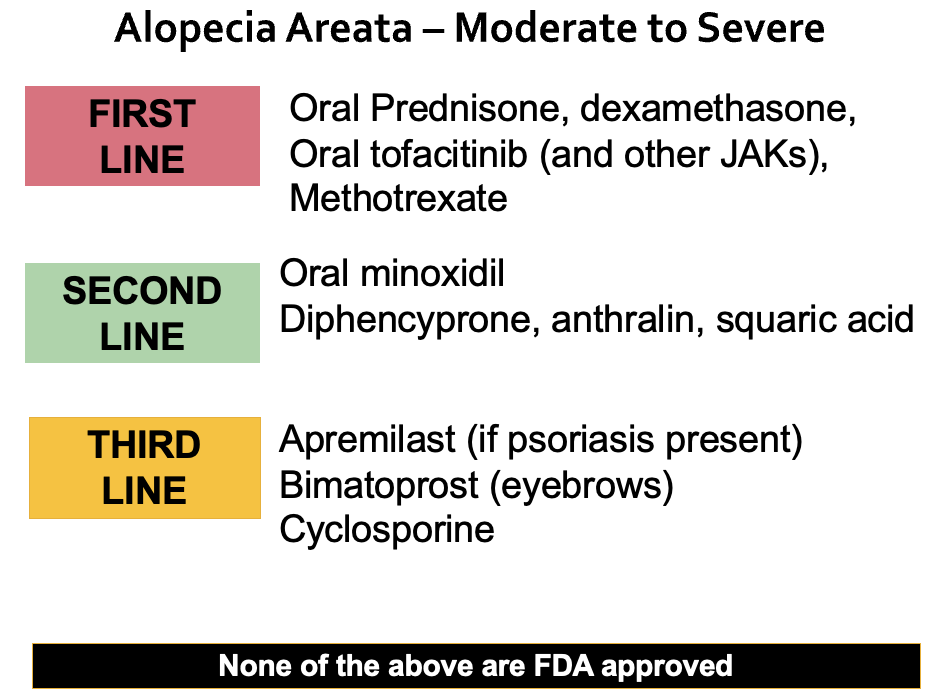Alopecia Areata: What are the treatments?
Treatments for Alopecia Areata Depend on Several Factors Including Severity
Alopecia Areata is an autoimmune disease that affects an estimated 0.5 % to 2% of the population. It is associated with inflammation at the bottom of the hair follicle which interferes with proper hair growth.
A variety of treatments are available. At present, none are formally FDA approved and all are what we call ‘off label’. The most helpful treatment will depend on the severity of the patient’s hair loss as well as their current health as well as their views on the risks and benefits of treatments. Factors like safety, affordability, and ease of treatment need to be factored into the decision on what treatment to start. Effectiveness is not the only variable. Women considering pregnancy will consider different treatments than those who are not. In addition, some patients with alopecia areata can regrow hair spontaneously, so a patch or two might not need any treatment at all.
Patients with patchy alopecia areata are often treated with steroid injections, topical steroids and minoxidil. These are by far the most helpful treatments and are referred to as first line treatments for limited alopecia areata. For a patient with a patch or two of alopecia areata, these are the preferred treatments. Dermatologists around the world who treat large numbers of patients with hair loss would generally agree with the use of these treatments. Practitioners who don’t treat large numbers of patients may have their own treatments but they are likely to be far less effective based on the current medical evidence from the past 50 years. Second and third line options including oral stseroids, PRP, antihistamines, oral minoxidil, tacrolimus, topical tofacitinib and others. These are shown in the chart below. Treatment may be lifelong but generally in more limited alopecai areata treatment is short term. Once hair regrows, treatment is stopped.
Treatment for More Widespread Alopecia Areata
Patients with greater degree of hair loss may not find they get the improvement they hope for with steroid injections, minoxidil and topical steroids. The treatment of more widespread alopecia areata is slightly different than more more limited alopecia areata. Treatments may include immunosuppressants such as a 2-4 months course of steroid, or oral methotrexate or oral JAK inhibitors. These are among the first line agents for severe alopecia areata. Oral minoxidil and oral immunotherapy (DPCP and squaric acid and anthralin) can also be considered. Treatment for severe alopecia areata may be lifelong in some cases. Risks (side effects) of the treatments must be thoroughly discussed with the supervising clinician before commencing treatment.
This article was written by Dr. Jeff Donovan, a Canadian and US board certified dermatologist specializing exclusively in hair loss.


